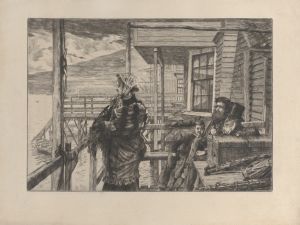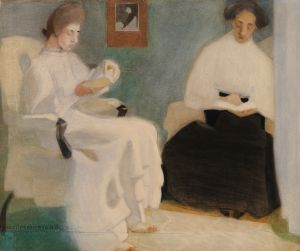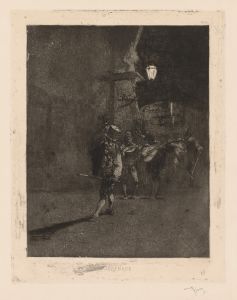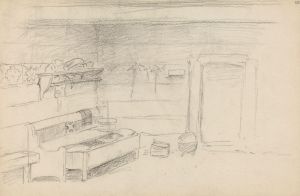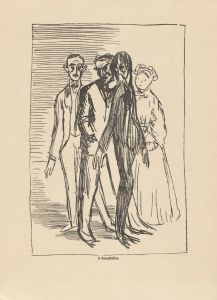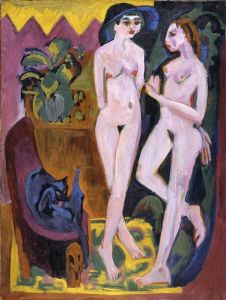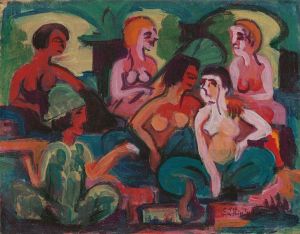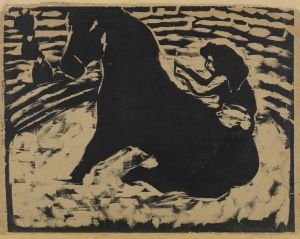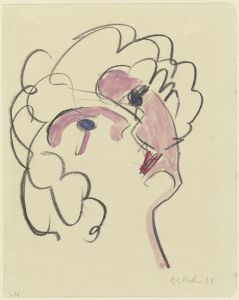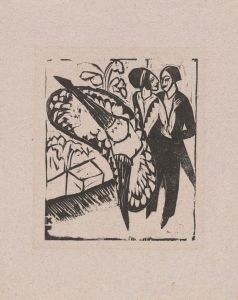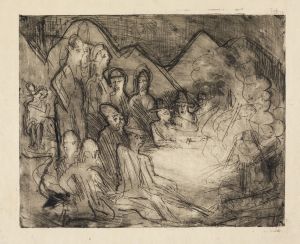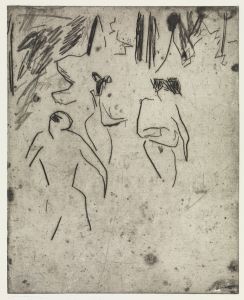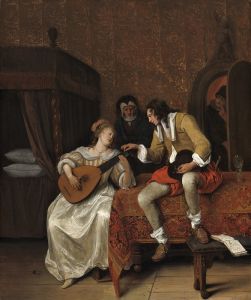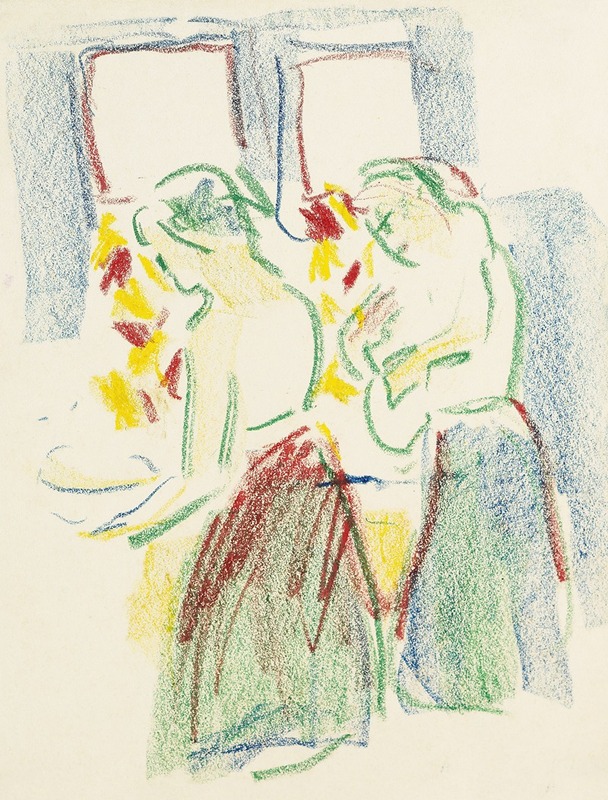
Zwei Mädchen bei der Toilette
A hand-painted replica of Ernst Ludwig Kirchner’s masterpiece Zwei Mädchen bei der Toilette, meticulously crafted by professional artists to capture the true essence of the original. Each piece is created with museum-quality canvas and rare mineral pigments, carefully painted by experienced artists with delicate brushstrokes and rich, layered colors to perfectly recreate the texture of the original artwork. Unlike machine-printed reproductions, this hand-painted version brings the painting to life, infused with the artist’s emotions and skill in every stroke. Whether for personal collection or home decoration, it instantly elevates the artistic atmosphere of any space.
Ernst Ludwig Kirchner was a prominent German expressionist painter and one of the founding members of the artist group Die Brücke (The Bridge), which played a pivotal role in the development of modern art in the early 20th century. Kirchner's work is characterized by bold colors, dynamic compositions, and a focus on the human figure, often exploring themes of modernity and the human experience.
"Zwei Mädchen bei der Toilette" (Two Girls at the Toilette) is one of Kirchner's notable works, reflecting his interest in capturing intimate and everyday moments with a sense of immediacy and emotional depth. Painted in 1913, this artwork exemplifies Kirchner's expressionist style, marked by its vibrant color palette and energetic brushwork. The painting depicts two young women engaged in the private act of grooming, a subject that Kirchner revisited in various forms throughout his career.
The composition of "Zwei Mädchen bei der Toilette" is both intimate and dynamic, with the figures rendered in a manner that emphasizes their physicality and presence. Kirchner's use of color is particularly striking, employing bold contrasts and vivid hues to convey the emotional resonance of the scene. The figures are outlined with strong, decisive lines, a hallmark of Kirchner's style, which serves to both define and animate the forms within the painting.
Kirchner's choice of subject matter in this painting reflects his broader interest in the lives and experiences of women, a theme that recurs throughout his oeuvre. The depiction of women in moments of privacy and introspection offers a glimpse into the personal and often unseen aspects of their lives, challenging traditional representations of femininity and domesticity. This approach aligns with the expressionist movement's broader aim to capture the emotional and psychological dimensions of human experience.
The painting also reflects Kirchner's engagement with the urban environment and modern life, themes that were central to his work during this period. The setting of the painting, while intimate, suggests the influence of the bustling city life that surrounded Kirchner and his contemporaries. This urban context is often implicit in Kirchner's work, providing a backdrop against which the dramas of individual lives unfold.
"Zwei Mädchen bei der Toilette" is housed in the collection of the Brücke Museum in Berlin, which is dedicated to the works of the Die Brücke artists. The museum holds an extensive collection of Kirchner's works, offering insight into his artistic development and the broader context of the expressionist movement. Kirchner's legacy as a pioneering figure in modern art continues to be celebrated, with his works held in major collections worldwide and regularly featured in exhibitions that explore the evolution of expressionism and its impact on contemporary art.
In summary, "Zwei Mädchen bei der Toilette" is a quintessential example of Ernst Ludwig Kirchner's expressionist style, capturing the vibrancy and complexity of human life through its bold use of color, dynamic composition, and exploration of intimate themes. The painting remains a significant work within Kirchner's oeuvre and the broader context of early 20th-century art.





